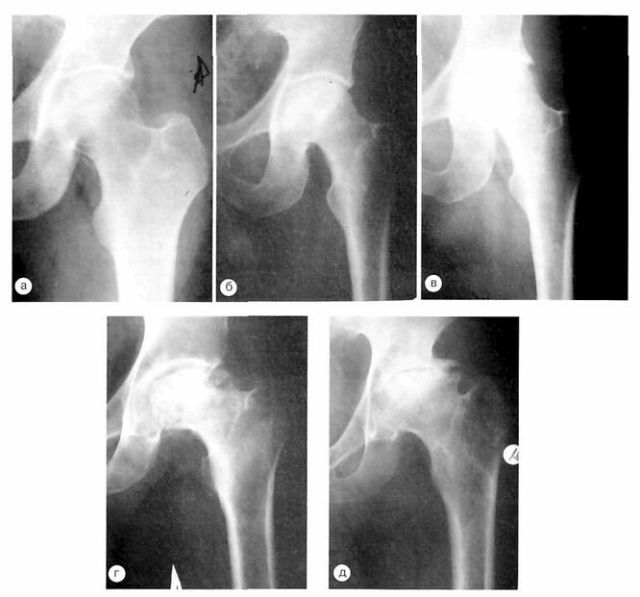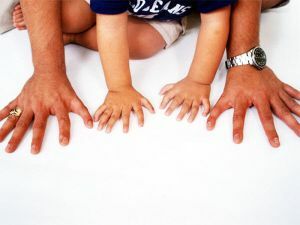 This disease, like polydactyly, is quite rare. This term is understood as an increase in the number of fingers.
This disease, like polydactyly, is quite rare. This term is understood as an increase in the number of fingers.
This violation does not pose a danger to life or health, but it gives the person substantial psychological discomfort.
To avoid this, you need to perform an operation to remove additional fingers in time.
Contents of the article
- General information on the pathology of
- How is polydactyly transmitted?
- What causes pathology?
- What kinds of pathology are there?
- How
- is manifested Diagnostic techniques
- The operation is the only way out
- Prognosis and prevention
General information on the pathology of
Polydactyly is an anatomical disorder that manifests itself in the form of an increase in the number of toes on the legs or hands. This pathology has an innate character and is observed equally often in boys and girls.
Polydactyly can be an independent disease or supplemented with other problems of the musculoskeletal system.
Often this disorder is supplemented by dysplasia, brachydactyly, which consists in the underdevelopment of phalanges of the fingers, or syndactyly - the fusion of the fingers.
To related diseases are the unnatural length of the fingers of the limbs - arachnodactyly and the underdevelopment of the fingers of ectrodactyly.
Polydactyly is not life threatening, but this disease can provoke disruption of the limbs and represent a psychological problem.
In addition, this disease often leads to a restriction of development. It can cause the use of orthopedic shoes. In adulthood, a person faces certain restrictions when choosing a profession.
How is polydactyly transmitted?
The main cause of this disease is a hereditary predisposition. Family forms of polydactyly have an autosomal dominant type of inheritance.
One of the parents can be a carrier of the gene for mnogopoyosti, but the symptoms of polydactyly are absent. The probability that the child will inherit this violation is 50%.
What causes pathology?
It is not always possible to name reliable reasons that provoke the emergence of polydactyly. The main cause of 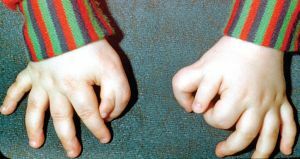 development of the disorder is a genetic predisposition.
development of the disorder is a genetic predisposition.
Sometimes, polydactyly becomes a manifestation of severe chromosomal or gene disorders. In medicine, there are many syndromes that are complemented by such a disease.
However, in most cases, it is impossible to identify the causes of the disease. There is a version that this disorder develops at the 5th-8th week of the fetal life and is associated with an uneven increase in mesodermal cells.
What kinds of pathology are there?
There are various types of the disease, and the classification of the disorder is carried out on different grounds.
So, according to the location of the superfluous finger, there are such types of pathology:
- Preaxial .In this situation, there is a repetition of the parts of the thumb.
- Central .In this case, there are violations of two or four fingers.
- Postaxial .In this case, the duplication of the little finger is observed.
Depending on the form of doubling, the following are distinguished:
- I type - the extra finger is considered a rudiment that consists of soft tissues;
- II type - the violation is a consequence of the bifurcation of the main finger;
- III type - the extra finger is considered high-grade.
The main manifestation of the disease is the level of deformation of the main finger. This indicator affects the choice of tactics of surgery.
It should be noted that polydactyly usually appears on the hands, but in some cases it affects the toes. Also, sometimes there is a mixed form of the disease, when extra fingers appear on the arms and legs.
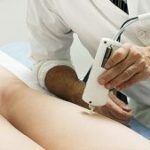 Laser therapy is a popular modern technology for the treatment of joints. When is the treatment of joints a laser is a necessity?
Laser therapy is a popular modern technology for the treatment of joints. When is the treatment of joints a laser is a necessity? Restoring the motor activity of joints is possible with the help of devices Artromot - more about the devices and their use.
How is the disease
The main symptom of polydactyly - the presence of extra fingers on the feet or hands. They may resemble vestigial appendages or have the right structure and dimensions.
These fingers are usually small in size and have fewer phalanges. Sometimes they do not have a bone base and resemble soft formations. In some cases, only the nail phalanx is doubled.
In addition to increasing the number of fingers, this distortion deforms the osteoarticular apparatus of the affected segments.
As the body ages, it progresses, which leads to the appearance of secondary disorders:
- In the case of chondroectodermal dysplasia , the disease is supplemented by short stature, shortening of limbs, and change in the shape of the chest. Cardiac defect can also be observed.
- With the development of the pathology of Lawrence-Barde-Mun-Biddle , the disease is combined with the appearance of excess weight, deformation of the skull, mental retardation, insufficient development of sexual characteristics, syndactyly.
- People with the Patau syndrome , in addition to polydactyly, have many developmental anomalies. These include microcephaly, corneal opacity, oligophrenia, and malfunctioning of various organs.
Diagnostic techniques

In the photo, a human X-ray with polydactyly legs
In the course of clinical diagnostics, the child is examined by an orthopedic traumatologist who detects anatomical disturbances and determines deformation.
In addition to the orthopedist, it is necessary to undergo examination at the pediatrician. You should also get a geneticist's advice.
In addition, requires the X-ray diffraction of , which allows to determine the anatomical features of bones and joints. To determine the state of cartilage, bone and soft tissue, you need to perform magnetic resonance imaging.
The electrophysiological methods of diagnostics are used in the examination. These include electromyography, rheovasography. With their help you can determine the condition of the muscles and blood flow. With the help of biomechanical research it will be possible to determine the static load on the legs and hands.
During the genetic examination, genealogical analysis is carried out, the type of inheritance is established, and the threat of the birth of a child with polydactyly is predicted. If the disease is associated with chromosomal or gene syndromes, prenatal diagnosis should be performed.
With the development of isolated polydactyly, pregnancy continues. When detecting severe chromosomal abnormalities, it is often necessary to interrupt pregnancy.
The operation is the only output of
The only treatment for polydactyly is a surgical operation, during which the rudimentary fingers are removed.
Usually, such interventions are performed after the child reaches a one-year-old age. If the extra finger is connected to the brush by a septum of skin, it is removed during the first month of life.
The operation is most often performed under general anesthesia, although sometimes doctors recommend choosing a local anesthetic. Depending on the type of intervention, there are several types of operations: 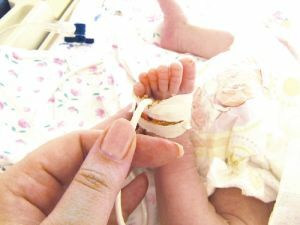
- removing excess finger without violating the integrity of the primary;
- finger removal in conjunction with the correction of the main.
After intervention, a rehabilitation course is shown to a person, which includes exercise therapy, massage, physiotherapy methods.
Such violations require prolonged treatment in the orthopedist.
Prognosis and prevention
Preventive measures consist in a detailed genetic examination of people whose immediate relatives have symptoms of polydactyly.
People from such families need to get a geneticist's advice. When pregnancy occurs, it is recommended that women avoid any adverse effects, especially in the first trimester.
At the same time, they should be observed by an orthopedist within 15 years. Then the growth of the hands and feet ends, and therefore the probability of deformation is absent.
Polydactyly - a fairly rare violation, the exact causes of which have not yet been established. It is believed that this pathology is associated with a hereditary predisposition.
It is possible to eliminate this disease only surgically, therefore it is not recommended to postpone the visit to the doctor with his symptoms.


